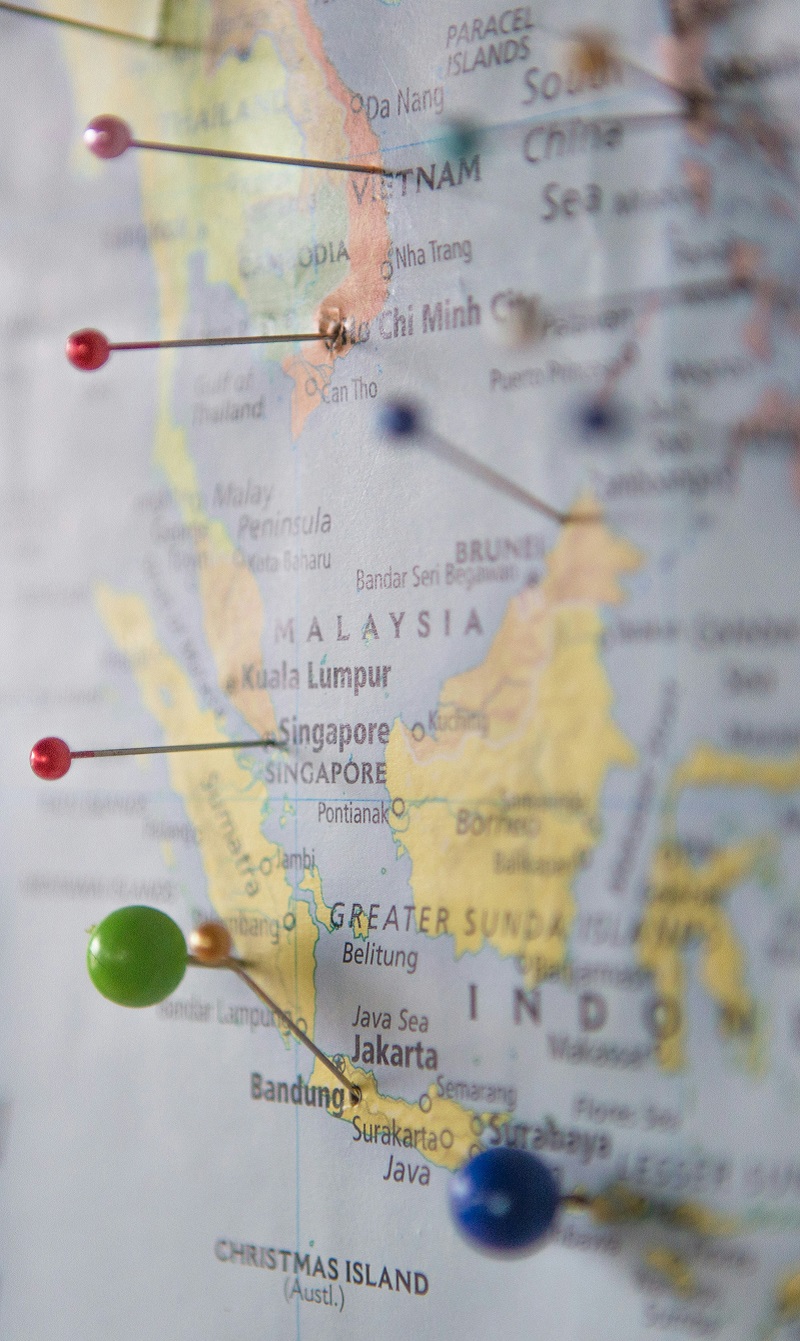A Circular Take on Tech
Considered as one of the enablers of circular economy and a useful transition tool from linear to circular economy, technology would be the best investment any modern-day company can make. Su Aziz writes. This article first appeared in issue 6 of In Focus magazine.
Nowadays, everyone in a developed economy advocates reduce, reuse, recycle. And most in developing economies do, too. Waking up from the environment-destroying concept of take, make, dispose. In short, a majority of the world population are proponents of circular economy instead of the tired linear economy. Switching from linear to circular economy can be a comfortable transition with the help of useful tools. One of them being technology.
Growth of circular economy (CE), according to an article in Accenture, ‘depends heavily on disruptive digital innovations, which is why many pioneering players either already have strong high-tech roots or are creating an ecosystem of partners with key technology capabilities.’ This sentiment is echoed by a study, Cities in the Circular Economy: The Role of Digital Technology, from Ellen MacArthur Foundation. It states, ‘Digital technology has enabled a fundamental shift in the way the economy functions, offering possibilities for radical virtualisation, de-materialisation and greater transparency on product use and material flows, all while creating new ways of operating and participating in the economy for producers and users.’
‘Many of today’s CE challenges are driving technological advancements as a means to close the loop and reuse resources. Although there are indeed many challenges to implementation such as motivating new consumption behaviours, redesigning supply chains and revamping regulation, governments and managers alike continue to build and leverage technology to support their CE initiatives,’ states a study published in Johnson Matthey Technology Review in 2020, Circular Economy: Recent Technology Management Considerations by Hazen, Russo and Confente. In fact, it was discovered that the pairing of CE processes with relevant technological innovations can lead to ‘transformation in favour of both the environment and economic growth’.
The same study by Hazen, Russo and Confente predicts that ‘new technologies will play a prevalent role in CE development and help to shape fundamental strategies for organisations seeking to participate in CE. These technological advancements will not only help improve industrial processes and operations, but also help to integrate the critical role of the consumer’. It believes that two major categories of technological innovation will deal with the multidisciplinary problem of plastic manufacturing as well as recycling, and the employment of big data analytics.
Evidently, as reports published by Ellen MacArthur Foundation states, the circular economy model, enriched with the synergies of technology is a powerful and potentially highly productive combination. In fact, a 2015 study conducted by the Ellen MacArthur Foundation on the circular economy potential in Europe suggested that a large part of economic opportunity is directly linked to advances in digital technology. The study states that these advances ‘in the form for example of tracking systems and mobile apps, whether as a key driver or a convenience factor, allow for a considerable jump in asset utilisation rates as well as material flow optimisation, the benefits of which add up to EUR900 billion annually by 2050’.
Hopefully, those numbers will shift an opinion in a 2019 article by Computer World, ‘One of the key adoption challenges is that for the circular economy to have a significant impact, it’s not enough for just one or two companies to change how they manufacture one product. Every organisation that forms our infrastructure and economy needs to embrace this new way of doing business – a mammoth task that is looking increasingly out of reach.’ Just keep reminding ourselves that catalysts of circular economy could very well be technological solutions. This, according to the Ellen MacArthur Foundation is very possibly the best investment that technology companies in this current time can make.
Enabling Tech Activities of Circular Economy
A collaborative paper between Ellen MacArthur Foundation and Google, Cities in the Circular Economy: The Role of Digital Technology by Sukhdev, Vol, Brandt and Yeoman, explores how certain aspects of digital technology can create an urban system that restores and regenerates. The paper states that the following technologies have been identified as enablers of circular economy activity in cities:
Asset tagging
Asset tagging technologies can provide information such as the condition and availability of products, components, or materials. In turn, this information can help extend the use of an asset, increase its utilization, loop or cascade it through additional use cycles, and also help regenerate natural capital. For example, prolonging the life cycle of a car by monitoring its usage patterns and condition through sensors can trigger alerts about problems as they appear, to allow for an easy and quick fix.
Geo-spatial information
When combined with asset tagging, geo-spatial information can provide visibility on the flow of materials, components, products and people across the city including patterns of optimal mobility routes, energy demand peaks and valleys, congestion, and waste generation. For example, the ability to visualise traffic and pollution information on base maps, layered with valuable insights from other sources such as census data, material information data, allows experts to predict and plan targeted strategies to address issues of congestion and pollution, but also allows citizens to understand and learn what that data shows in a format that is accessible and understandable.
Big data management
Current computation capability allows us to overlay general patterns of human behaviour on top of aggregated information received from asset tracking and geo-spatial mapping activities. For example, predicting energy consumption patterns at a local level, suggesting transport options that avoid peak hour traffic flows in real-time. Leveraging advanced processing capacities, computers now can perform complex and agile analyses that will help to determine and deploy the most effective resource solutions at an unprecedented speed and quality.
Connectivity
The widespread and easy access to smartphone and application technology allows for increased connection between people, and between people and products leveraging asset tracking capabilities. This enables circular business models such as leasing and sharing platforms, reverse logistics, take-back systems, and distributed remanufacturing. For example, business models such as Uber, Airbnb or BlaBlaCars would not be feasible without an accessible app that connects assets on offer with those who would like to use them.
Five Key Digital Technologies Enabling Circular Economy by Accenture
Mobile Access
Ubiquitous mobile technology at increasingly affordable prices makes it an ideal enabler of circular economy. Mobile technology supports the circular economy through simplifying and improving the user experience by making remote interactions possible across customers, suppliers and goods themselves. Mobile apps combined with other digital technologies like machine-to-machine (M2M) connectivity and big data analytics can enable remote control, predictive maintenance, mobile payments and automated monitoring.
Machines
M2M approach lets a host of businesses manage their products remotely. It reduces risks associated with selling offerings that come with a performance guarantee, supporting the product as a service business model. Experience suggests that M2M connectivity can cut overall service and maintenance costs by as much as 30 per cent. Linking equipment, products, factories and supply chains using M2M solutions, allied with big data analytics, drive efficiency and productivity. 90 per cent of companies surveyed across eight industries said this combination of technologies was either their top priority or among their top three. It was estimated that these improvements could increase global GDP by as much as USD10 trillion to USD15 trillion over the next two decades.
Cloud
Cloud computing makes it easier to offer the customised products that customers want, driving resource savings. For instance, a media company realised that by publishing one of its newsletters online instead of printing it, it could save nearly 135 tons of paper a year, along with 3.7 million litres of water, almost 270 barrels of oil and more than 550,000 kilowatt-hours of electricity. Putting the newsletter online would also reduce the amount of industrial waste the company generates by almost 14,000 kilograms.
Social Media
Social media platforms are evolving into a fundamentally new approach to sharing, helping companies gauge customer sentiment quickly and cost-effectively by piggybacking on existing networks like Facebook. These new sharing platforms help firms build trust among consumers and enable users to make their own transactions as well as logistics arrangements without involving third parties. For example, it connects people who need a car for short periods with vehicle owners who don’t use their cars all the time.
Big Data
Manufacturers can use advanced analytics to gain insights into product use patterns and customer requirements, enabling them to bundle physical products with attractive add-on services. Creating models that predict consumer behaviour based on historical data can allow firms to optimise product maintenance schedules, reducing cost, labour and resource requirements. For example, a firm combining big data analytics with LEDs, networking and software can reduce customer lighting-related energy use by up to 90 per cent – through analysing behaviour and requirements of building occupants, providing optimal service as well as extending lighting lifecycles by activating systems only when required. While traditional analytics can handle most buildings, airports and other large public facilities with multiple users require increased quantitative power offered by big data analytics.
Main photo by Rodion Kutsaev on Unsplash





